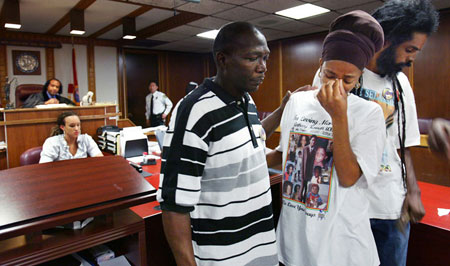
Arleen White struggles to cope after the judge accepted a plea of manslaughter in connection with the murder of her 15-year-old son. Photo by Nuri Vallbona/The Miami Herald.
RELATED ARTICLE
"Being a Photojournalist Doesn’t Equal Job Security"
- Nuri VallbonaWhen I started working on a documentary piece about teen violence for The Miami Herald, Arleen White, the mother of a murdered child, called me and asked me to attend a court hearing where her son’s murderer was to take a plea bargain.
“He may be getting out,” said a tearful White. The reporter and videographer were out of town working on other projects so the storytelling was left to me and my still camera.
The hearing turned out to be a very dramatic event with White condemning her son’s killer and chastising the court system for failing her family. Then she fainted at the podium when her son’s killer accepted a plea deal that would release him from prison. He had served only four and a half years.
Videographer Candace Barbot incorporated my still images into her video to complete the story. In doing this, she said, “I’ve come to understand that a still photo does something that video can never do and that is that it allows us to peer into the eyes and soul of the subject in a very different way. We can linger more on it whereas video is always moving.”
In addition to running in the print edition, the story and photos were posted online along with a slideshow and video. “It’s all adding value whether it’s a still image or a moving picture image. If they’re both powerful, then they both carry the story,” said Barbot.



